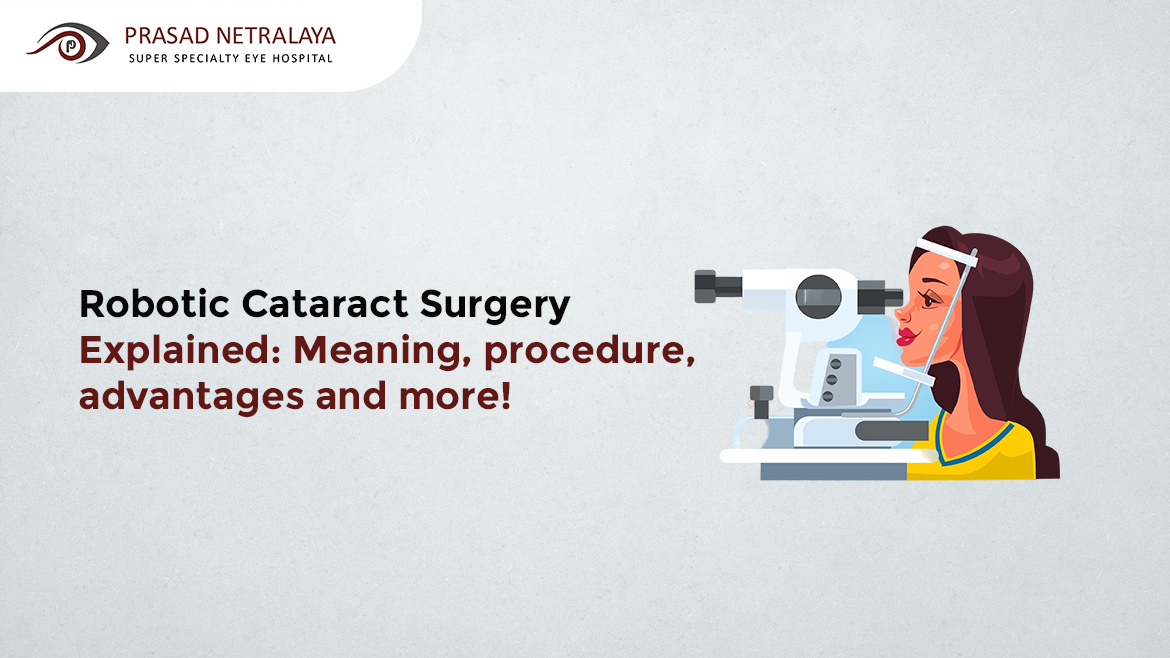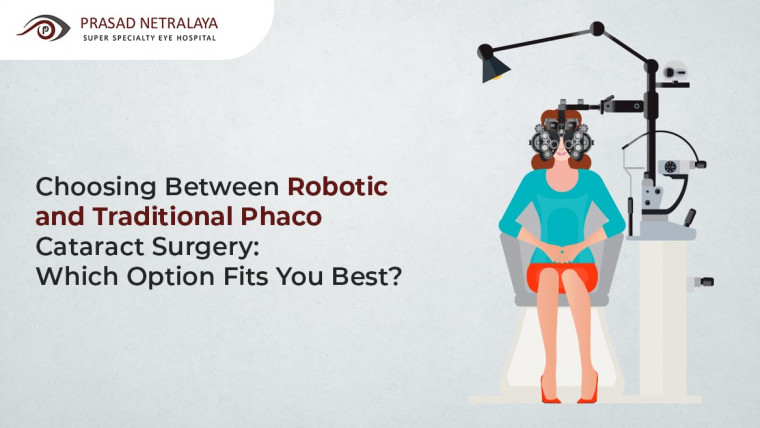Are you or a loved one struggling with blurry vision due to cataracts, making daily activities like reading, and driving, a burden? We understand the frustration of impaired vision, and its impact on your life. Traditional cataract surgery has provided solutions for a long time now, even though it has its fair share of success rates and risks. But now it’s time to switch to something new and advanced.
With medical technology on the rise, a remarkable alternative has come into existence, called robotic cataract surgery. In this comprehensive guide, we will cover everything you need to know about this surgery, from its meaning, and procedure to benefits and more.
Table of Contents
What is Robotic Cataract Surgery?
Alt text: Robotic Cataract Surgery
Robotic cataract surgery is an advanced technique that uses a femtosecond laser-guided robotic arm to perform surgery with extra precision, unlike traditional techniques. This technology, such as the LENSAR laser, allows surgeons to make very small incisions in the eye and handle delicate procedures like breaking open the cataract or opening the lens capsule.
This technique is considered to be a faster and potentially better one due to its ability to produce accurate results and have full control. This innovation is a step towards improved patient care and delivering the most favorable outcomes.
Also read about: Thе Rolе of Fеmtosеcond Lasеrs
The Complete Procedure of Robotic Cataract Surgery:
Here’s how this surgery works step by step:
1. Preparation:
- Before the surgery begins, the eye is numbed with local anesthesia for comfort.
- Patients may also receive mild sedation (i.e., a drug or substance used to get a person to sleep or relax) during the procedure.
2. Initial Steps:
- A small cut is made in the cornea (i.e., the clear front part of the eye) to reach the lens.
3. Capsulotomy:
- Advanced imaging makes it possible for the Robotic LASER to make a neat circular opening in the lens capsule (i.e., a thin, transparent membrane that surrounds the natural lens).
4. Lens Fragmentation:
- Thel LASER, controlled by a computer, softens and breaks the cataract into small pieces. This reduces the need for ultrasound energy during surgery, which can pose potential harm to the eye.
5. Cataract Removal:
- The broken pieces of cataract pieces are vacuumed out through the same small incision made in the beginning.
6. IOL Placement:
- An intraocular lens (IOL), chosen based on the patient’s specific vision requirements and measurements, is placed into the empty lens capsule. This lens is the one that replicates the natural lens by permanently replacing it.
7. Final Adjustments:
- The IOL is positioned carefully within the eye to optimize vision correction.
8. Closure:
- The small corneal incision usually heals on its own without getting any stitches done.
Benefits of Robotic Cataract Surgery:
Robotic cataract surgery offers a leap forward in precision and safety, transforming how cataracts are treated. Here are the key benefits simplified for you:
1. Less Invasive:
This technique involves smaller incisions and less likelihood of complications from occurring, leading to a quicker recovery period compared to the outdated techniques. No blades are used in this procedure
2. Enhanced Precision:
The robotic system is capable of producing precise surgery, potentially improving outcomes and reducing the need for glasses or contact lenses after the surgery.
3. Shorter Surgery Time:
You won’t have to spend long hours in the operating room as it takes less time to conduct this surgery
4. No Stitches Required:
As the incisions made during the surgery are small, they tend to heal on their own and the process is generally faster, eliminating the need for stitches.
5. Lower Infection Risk:
With more accurate techniques and reduced tissue trauma, robotic surgery lowers the risk of infections that would otherwise occur with traditional methods.
6. Customized Treatment:
Patients have the complete liberty to choose from advanced intraocular lenses (IOLs) as per their vision needs and lifestyle, ensuring great vision in the long run.
Considering cataract surgery? Ask your doctor about robotic cataract surgery—it could offer you safer, more precise treatment with better recovery outcomes.
Who is Eligible for Robotic Cataract Surgery?
You’re most likely suitable for this advanced procedure unless you are suffering from complex conditions or involve issues like a non-dilating pupil. In such cases, the doctor may recommend traditional phacoemulsification surgery. However, if you have a hard and matured cataract, laser cataract surgery can be the best option to provide clear vision. Before operating the eye, your eye surgeon will first make it a priority to assess your eye and check for any risks involved. This ensures a safe procedure, whether you’re opting for traditional or robotic cataract surgery.
Read this blog to know about the cost of this surgery: Revolutionary Non Invasive, Ultra Fast Robotic Laser Cataract Surgery : A Precise and Painless Breakthrough
Transform Your Vision with State-of-the-Art Cataract Surgery
Experience top-tier eye care at Prasad Netralaya, known for its excellence in possessing skilled cataract surgeons who commit to patient care, always.
Book your appointment today to experience safety and precision with the latest robotic cataract surgery treatment available in Mangalore across multiple other locations.
FAQs (Frequently Asked Questions)
1. What’s the key function of robotic surgery?
Robotic surgery enables doctors to perform a wide range of procedures with greater accuracy, flexibility and control as opposed to traditional methods. This technology usually allows surgeries to be conducted on tiny incisions, although it can be performed on open surgeries as well.
2. What are the different types of robotic surgery?
Robotic surgery includes various different types including cardiothoracic, colorectal, gastrointestinal, gynecologic, neurological, otolaryngologic, and urologic procedures.
3. What are the disadvantages of robotic surgery?
Robotic surgery is only available in centers that have trained specialists. It may also pose challenges if a person has complications from past surgery as it would compel the surgeon to perform an open procedure with a large incision.
4. What are the two major advantages of robotic surgery?
Robotic surgery offers many benefits, but the 2 key benefits are, shorter hospitalization and faster recovery duration.
5. Why is robotic cataract surgery the future?
Robotic surgery represents the future, as it can reduce complications to a large extent. Through high-definition 3D imaging, robotic instruments allow surgeons to handle surgeries with accuracy and high control, thereby leading to reduced damage after the surgery.
Dr. Vikram Jain, M.S. had his medical training (MBBS) from Kasturba Medical College, Mangalore, India. He did his master’s in Ophthalmic surgery from Kasturba Medical College, Manipal. He currently manages the Glaucoma department of Prasad Netralaya hospital.



